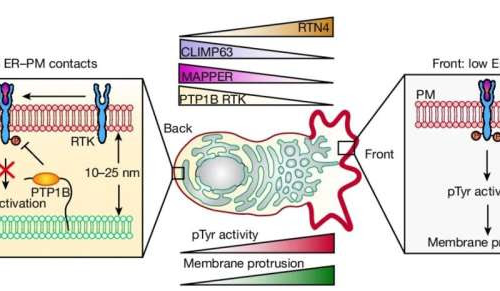August 29, 2024 by University of Southampton Scientists are on the verge of a cancer breakthrough after working out how the body’s immune system targets cells devastated by the disease. A new study has discovered that our natural killer cells, from the immune system which protect against disease and infections, instinctively recognize and attack a...
Category: <span>biological sciences</span>
Organ Damage More Common in Early Stages of Lupus
MEDBRIEF Edited by Manasi Talwadekar August 12, 2024 TOPLINE:The first year after the diagnosis of systemic lupus erythematosus (SLE) is crucial, with the highest percentage of patients experiencing organ damage. Cardiovascular issues are the second most prevalent after musculoskeletal damage in both early and later stages of SLE. METHODOLOGY:Researchers assessed organ damage persisting at least...
Treatment with a mixture of antimicrobial peptides found to impede antibiotic resistance
JULY 2, 2024 by Public Library of Science Credit: Bar Manon (CC-BY 4.0, https://creativecommons.org/licenses/by/4.0/). Created with Biorender. A common infection-causing bacteria was much less likely to evolve antibiotic resistance when treated with a mixture of antimicrobial peptides rather than a single peptide, making these mixtures a viable strategy for developing new antibiotic treatments. Jens Rolff...
Study pushes understanding of how cells migrate
Cell & MicrobiologyHomeBiologyMolecular & Computational biology JUNE 24, 2024 by Jim Schnabel, Cornell University Model of how ER–PM contact gradients generate the observed gradient of pTyr signaling. Credit: Nature (2024). DOI: 10.1038/s41586-024-07527-5Interactions between two key structures within cells help establish the front-to-back “polarity” that is essential to cell migration, according to a new study by...
Distinct Bacterial Communities Identified in Patients With Cystic Fibrosis
Two types of dysbioses in cystic fibrosis identified.NewsPublished: June 12, 2024 | Original story from the Medical University of Vienna Credit: Robina Weermeijer / Unsplash. Read time: 2 minutesChronic lung diseases are often accelerated and exacerbated by polymicrobial infections. An international study team led by MedUni Vienna has identified two types of these so-called dysbioses...
Ism1 deficiency in mice exacerbates bleomycin-induced pulmonary fibrosis with enhanced cellular senescence and delayed fibrosis resolution
NEWS RELEASE 12-JUN-2024 Peer-Reviewed PublicationTSINGHUA UNIVERSITY PRESS IMAGE: DURING FIBROSIS PROGRESSION, ISM1-/- MICE EXHIBITED ENHANCED CELLULAR SENESCENCE IN THE ALVEOLAR TYPE II EPITHELIAL (AT2) CELLS WITH INCREASED RELEASE OF SENESCENCE ASSOCIATED PRO-INFLAMMATORY FACTORS WHICH LEAD TO ENHANCED IMMUNE CELL INFILTRATION, RELEASE OF PRO-FIBROTIC MEDIATORS PROMOTING THE ACTIVATION OF MYOFIBROBLASTS WITH EXCESSIVE COLLAGEN DEPOSITION, RESULTING IN...
First pig-to-human liver transplant recipient ‘doing very well
The transplant aims to prolong the life of the patient and provides important lessons for doctors.By Smriti Mallapaty The surgery to implant a genetically modified pig’s liver into the 71-year-old man lasted 8 hours.Credit: David Tadevosian/Shutterstock A 71-year-old man in China has become the first living person to receive a liver transplant from a genetically...
What are the links between liver disease and the microbiome?
Content by Owlstone Medical LtdReviewed by Louis Castel The gut-liver axis is the term used to describe the two-way relationship between the gut microbiome and the liver. This relationship stems from the integration of signals produced by various factors such as diet, genetics, and the environment. The liver and the gastrointestinal tract are connected by...
“One ring to rule them all”: How actin filaments are assembled by formins
MAX PLANCK INSTITUTE OF MOLECULAR PHYSIOLOGY IMAGE: FORMINS ARE MADE OF TWO IDENTICAL PARTS (RED, ORANGE) THAT ENCIRCLE THE ACTIN (GREY) FILAMENT IN A RING-LIKE CONFORMATION.CREDIT: MPI OF MOLECULAR PHYSIOLOGY Joining forces “Our discovery allows us to interpret decades of biochemical studies on formins through new lenses, which answers many long-standing, open questions in this...
Scientists develop new strategy for treating tendon–bone injuries
CHINESE ACADEMY OF SCIENCES HEADQUARTERS IMAGE: SCHEMATIC ILLUSTRATION OF THE IMMUNOMODULATORY MULTICELLULAR SCAFFOLDS BASED ON MANGANESE SILICATE (MS) NANOPARTICLES FOR INTEGRATED TENDON-TO-BONE REGENERATION view moreCREDIT: DU LIN AND WU CHENGTIE According to a study published in Science Advances, a research group led by Prof. WU Chengtie from the Shanghai Institute of Ceramics of the Chinese...







